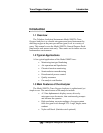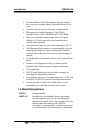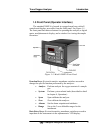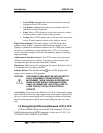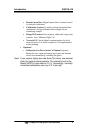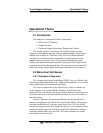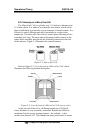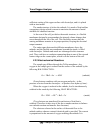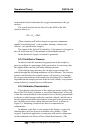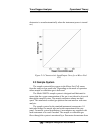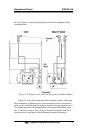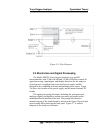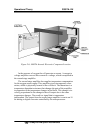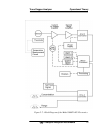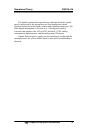
Trace Oxygen Analyzer Operational Theory
Teledyne Analytical Instruments 9
sufficient wetting of the upper surface with electrolyte, and it is plated
with an inert metal.
The anode structure is below the cathode. It is made of lead and has
a proprietary design which is meant to maximize the amount of metal
available for chemical reaction.
At the rear of the cell, just below the anode structure, is a flexible
membrane designed to accommodate the internal volume changes that
occur throughout the life of the cell. This flexibility assures that the
sensing membrane remains in its proper position, keeping the electrical
output constant.
The entire space between the diffusion membrane, above the
cathode, and the flexible rear membrane, beneath the anode, is filled
with electrolyte. Cathode and anode are submerged in this common
pool. They each have a conductor connecting them to one of the external
contact rings on the contact plate, which is on the bottom of the cell.
2.2.3 Electrochemical Reactions
The sample gas diffuses through the Teflon membrane. Any
oxygen in the sample gas is reduced on the surface of the cathode by the
following HALF REACTION:
O
2
+ 2H
2
O + 4e
–
→ 4OH
–
(cathode)
(Four electrons combine with one oxygen molecule—in the
presence of water from the electrolyte—to produce four hydroxyl ions.)
When the oxygen is reduced at the cathode, lead is simultaneously
oxidized at the anode by the following HALF REACTION:
Pb + 2OH
–
→ Pb
+2
+ H
2
O + 2e
–
(anode)
(Two electrons are transferred for each atom of lead that is
oxidized. Therefore it takes two of the above anode reactions to balance
one cathode reaction and transfer four electrons.)
The electrons released at the surface of the anode flow to the
cathode surface when an external electrical path is provided. The current
is proportional to the amount of oxygen reaching the cathode. It is



